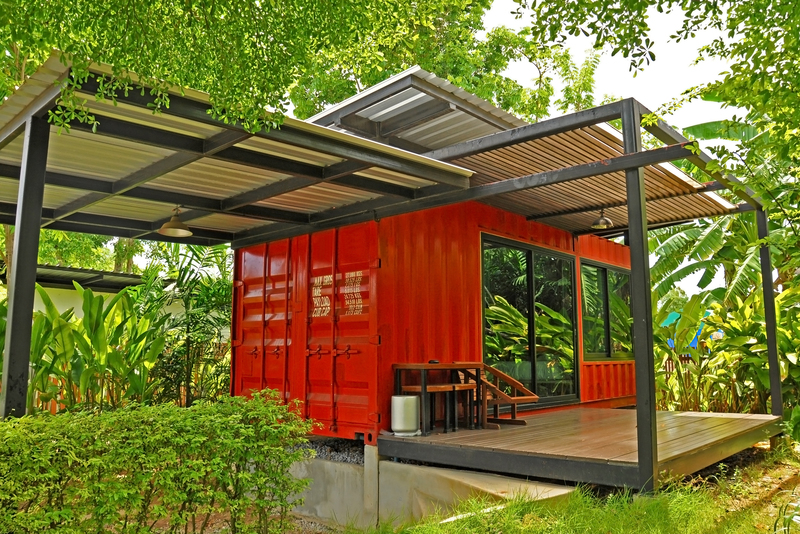Practices to Keep Green Waste out of Landfills
Posted on 28/03/2025
Green waste, also known as organic or yard waste, includes garden trimmings, grass clippings, leaves, and other biodegradable materials. These organic materials constitute a significant portion of the waste that ends up in landfills, contributing to methane emissions, a potent greenhouse gas. Moreover, these materials can be repurposed to enrich soils and support eco-friendly practices. Therefore, it's crucial to adopt strategies to keep green waste out of landfills. This article discusses various sustainable practices that individuals, communities, and businesses can embrace.
Understanding Green Waste
Before diving into the practices, it is important to understand what constitutes green waste and its environmental impact. Green waste includes plant-based materials such as grass clippings, leaves, garden trimmings, branches, and vegetable peels. Unlike other types of waste, green waste is entirely biodegradable. When deposited in landfills, however, it undergoes anaerobic decomposition, releasing methane, a greenhouse gas far more potent than carbon dioxide. By diverting green waste from landfills, we can significantly reduce greenhouse gas emissions and create valuable materials such as compost and mulch.

Composting
Composting is one of the most effective methods to manage green waste. It involves the aerobic decomposition of organic materials into a nutrient-rich soil amendment. Here's how to get started:
Home Composting
Home composting is a simple, cost-effective way to recycle yard waste. You can create a compost pile in your backyard or use a compost bin. The essential elements for successful composting include a balanced mix of green (nitrogen-rich) and brown (carbon-rich) materials, sufficient moisture, and adequate aeration. Common green materials include grass clippings and vegetable scraps, while brown materials encompass dried leaves, newspaper, and small branches.
Community Composting
Many urban areas now offer community composting programs. These programs often provide designated drop-off points where residents can bring their organic waste. Some municipalities also offer curbside compost collection services, making it even easier for residents to participate.
Commercial Composting
Businesses and institutions can also adopt composting practices. Restaurants, schools, and offices generate substantial amounts of organic waste that can be composted. Specialized commercial composting services can manage large volumes of green waste effectively, turning them into compost that can be used for landscaping or sold commercially.
Mulching
Mulching is another valuable technique for managing green waste. Mulch is organic material spread over the soil surface to retain moisture, suppress weeds, and improve soil fertility. Here's how to utilize mulch effectively:
Grasscycling
Grasscycling involves leaving grass clippings on the lawn after mowing, where they decompose and release nutrients back into the soil. This practice reduces the need for synthetic fertilizers and helps maintain a healthy lawn.
Leaf Mulching
Instead of bagging fallen leaves, consider mulching them. Shred the leaves with a lawnmower and spread them over garden beds. Leaf mulch provides a slow-release source of nutrients and improves soil structure. Additionally, it acts as an insulating layer, protecting plants from extreme temperatures.
Vermicomposting
Vermicomposting is the process of using worms to decompose organic waste. This method is especially suitable for households with limited space or those that produce smaller amounts of green waste. Vermicompost, or worm castings, is highly rich in nutrients and can be used to fertilize gardens and potted plants. Here's how to get started:
Selecting the Right Worms
Red wigglers (Eisenia fetida) are the most commonly used worms for vermicomposting due to their voracious appetite for organic matter.
Setting Up a Vermicompost Bin
Choose a container with good drainage and ventilation. Add bedding material such as shredded newspaper, coconut coir, or cardboard, and moisten it. Then, introduce the worms and start adding kitchen scraps and small amounts of yard waste. Over time, the worms will convert these materials into rich compost.
Green Waste Drop-Off Points
When large quantities of green waste are generated, drop-off points provide an effective solution. Many local governments and private organizations operate dedicated green waste drop-off centers where residents can deposit their yard waste. The collected material is then processed into compost or mulch. Check with your local municipality for available services and guidelines.
Responsible Disposal
If composting or mulching is not feasible, ensure that green waste is responsibly disposed of. Many municipalities offer special yard waste collection services, transporting the material to composting facilities rather than landfills. By utilizing these services, residents can help keep green waste out of landfills and reduce its environmental impact.
Innovative Technologies
Researchers and businesses are developing innovative technologies to manage green waste more efficiently. For instance, anaerobic digestion systems can convert organic waste into biogas and digestate. Biogas can be used to generate electricity or heat, while digestate serves as a nutrient-rich fertilizer. Such technologies not only divert green waste from landfills but also provide renewable energy and valuable by-products.
Educating the Community
Creating awareness and educating the community about the importance of keeping green waste out of landfills is fundamental to success. Municipalities, schools, and environmental organizations can organize workshops, seminars, and public awareness campaigns to inform residents about sustainable waste management practices. Providing educational resources and information on composting, mulching, and responsible disposal can encourage more people to participate.

The Role of Policies and Legislation
Government policies and legislation play a crucial role in managing green waste. Many regions have implemented regulations to ban or limit the disposal of organic waste in landfills. For instance, some municipalities require residents to separate green waste from other trash and provide designated bins for yard waste collection. Such policies encourage waste diversion and support the development of composting and recycling industries.
Conclusion
Keeping green waste out of landfills is a vital step towards reducing greenhouse gas emissions, conserving natural resources, and promoting sustainable waste management practices. By embracing techniques such as composting, mulching, vermicomposting, and responsible disposal, individuals, communities, and businesses can significantly reduce their environmental footprint. Additionally, supporting innovative technologies, participating in community programs, and advocating for legislative changes can further enhance the effectiveness of these practices. Together, we can create a more sustainable future by turning green waste into valuable resources.




 020 3743 9508
020 3743 9508


